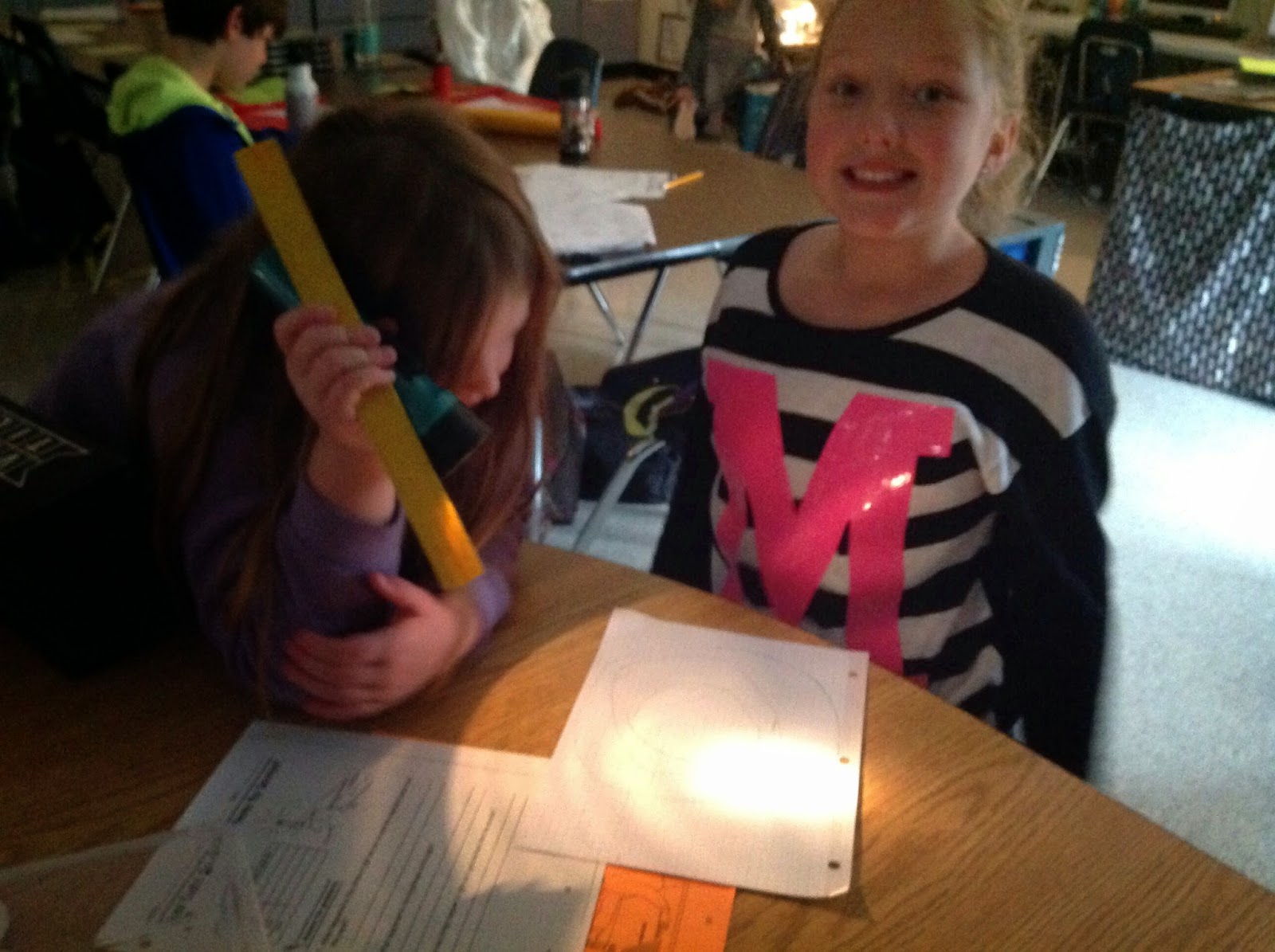Students had to place a flashlight 2 centimeters above their paper and record the size of the circle of light. They continue to do this, 2 centimeters at a time until the circle of light went off the paper.
The results proved that the farther away the light was from the paper, the dimmer the light was and the wider the circle became.
Another property of light is making things VISIBLE and identifying the COLORS of light in the VISIBLE SPECTRUM
An object is VISIBLE only if it is a source of light or it reflects light.
Sources of Light come in 3 categories:
Direct/Natural Light
Sun, stars, magma/lava
Indirect/Man Made Light
fireflies, fire, candles, light bulbs
Reflected Light (not an actual source, it reflects light from another source)
moon, planets, mirrors
Transparent, Translucent, & Opaque
Light behaves differently when it strikes different objects.
Transparent materials allow all light to pass through. Objects can be seen clearly.
Translucent materials allow some light to pass through. Some light passes through and some light is absorbed. Objects appear as blurry shapes.
Opaque materials do not allow any light to pass through.
All light is either reflected or absorbed.
Reflection and Absorbtion
Objects appear to us as certain colors depending on the color that the object is reflecting.
A green apple REFLECTS green and ABSORBS (takes in) red, orange, yellow, blue, indigo, and violet.
A banana REFLECTS yellow and ABSORBS (takes in) red, orange, green, blue, indigo, and violet.
Black ABSORBS all colors.
White REFLECTS all colors.
The Visible Spectrum
White light is made up of many colors.
White light enters a prism and separates into the colors.
Red, orange, yellow, green, blue, indigo, and violet
Also known as ROYGBIV
Light travels in a straight line.
Light is a form of energy. (the ability to make something move, change, or happen)
Refraction is the bending of light.










No comments:
Post a Comment